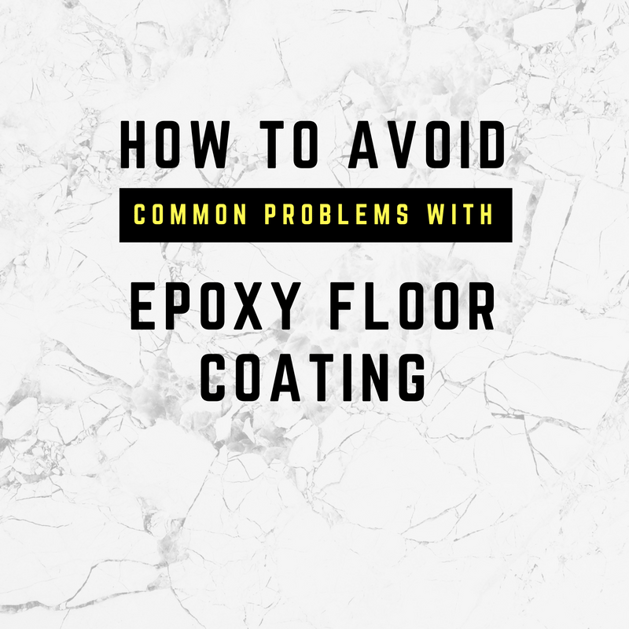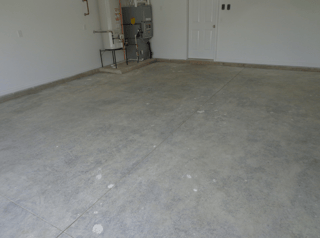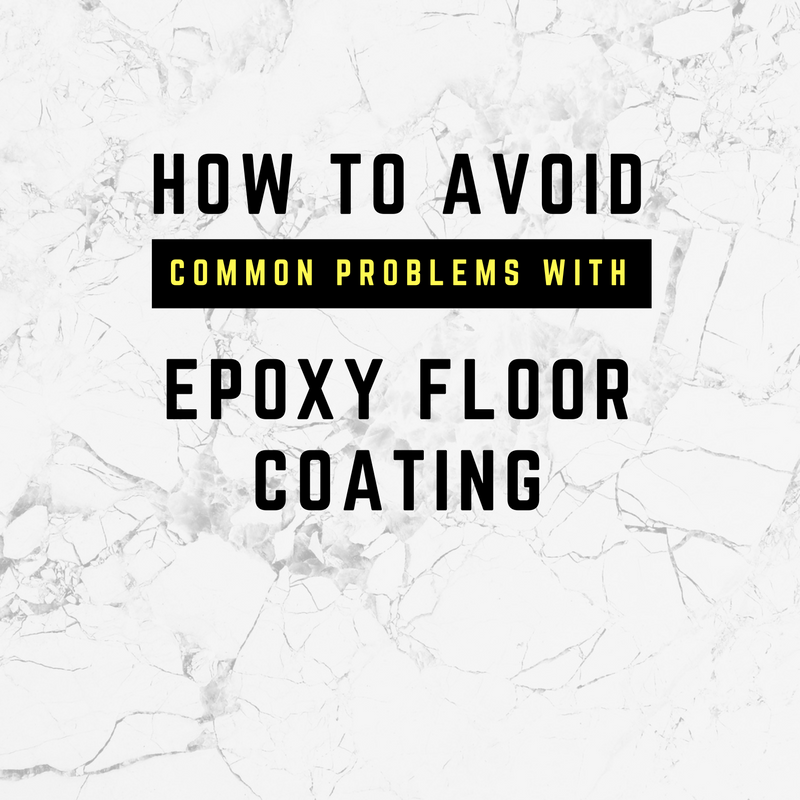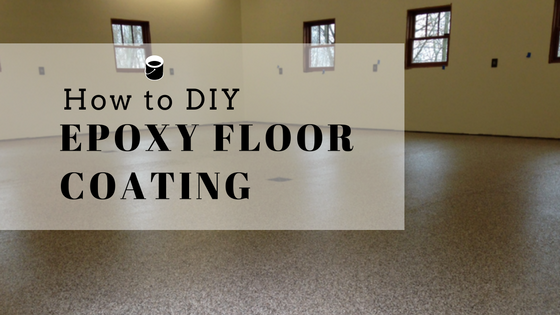Epoxy floor coating is one of the best garage flooring options on the market for its durability, beautiful shine and low level of maintenance. However, if applied incorrectly, you can experience problems with your garage floor.
When an epoxy coating fails, it doesn't offer the protection and durability that usually comes along with this type of flooring. And once installed, epoxy is extremely difficult to remove. So if the application isn't done correctly, you could be left with a very unattractive floor that's nearly impossible to remove.
Here are some common problems with epoxy floor coatings and ways to avoid them.

1. Peeling Floors
Several factors can cause the epoxy to peel from your floors. The most common reasons this occurs is improper preparation of the epoxy or applying the epoxy when the temperature is too hot or cold or the humidity is too high.
Other factors than cause cause floors to peel include improper preparation of the concrete flooring. The floor must be clean and free of oil, grease and debris. Otherwise, as the epoxy cures, it will pull away from the floor, causing "fisheyes" or round holes in the finish.
And contrary to what you might believe, epoxy won't adhere to a smooth surface. That means even a brand new concrete floor needs to be properly prepped. That involves acid etching at a minimum. Grinding the concrete is the best option to prepare it for epoxy but it can be difficult for the average homeowner.
Other factors than cause cause floors to peel include improper preparation of the concrete flooring. The floor must be clean and free of oil, grease and debris. Otherwise, as the epoxy cures, it will pull away from the floor, causing "fisheyes" or round holes in the finish.
And contrary to what you might believe, epoxy won't adhere to a smooth surface. That means even a brand new concrete floor needs to be properly prepped. That involves acid etching at a minimum. Grinding the concrete is the best option to prepare it for epoxy but it can be difficult for the average homeowner.
2. Moisture Buildup Underneath the Coating
This can occur when there's moisture in the concrete or when there's a big difference in the temperature of the epoxy material and the substrate floor. After you etch the floor with acid, you need to make sure it's completely dry before applying epoxy. You'll usually need to wait at least 24 hours after etching before proceeding with the epoxy. Otherwise, moisture trapped in the concrete's pores will rise up and cause bubbles in the floor's finish.
Additionally, moisture under the concrete slab causes pressure that forces the epoxy to separate from the concrete's surface, often taking pieces of concrete with it. Avoid the problem by doing a simple moisture test to determine if the floor is right for an epoxy coating.
Additionally, moisture under the concrete slab causes pressure that forces the epoxy to separate from the concrete's surface, often taking pieces of concrete with it. Avoid the problem by doing a simple moisture test to determine if the floor is right for an epoxy coating.
3. Air Bubbles Beneath the Epoxy
Air bubbles in the epoxy can also be caused by applying epoxy in direct sunlight or when the temperature is too cold. They can also be caused by putting epoxy on concrete that's too porous. To avoid this problem, the porous concrete will need to be properly prepared for the epoxy to seal correctly.
You may also see air bubbles if you don't mix the epoxy correctly. Mixing too fast with a paddle mixer traps air in the epoxy. This will make air bubbles appear in the finish when the epoxy is applied. Don't pump the paddle mixer up and down or run it too fast near the surface. This will create suck air into the epoxy and create an unsatisfactory finish.
You could also experience issues if you fail to mix the Part A resin with the Part B hardener in the right proportion. You must follow the mixing instructions carefully. Some products require the mixed batch to sit for an induction period. Not allowing for the induction period may cause your epoxy to fail to cure and harden properly.
Air bubbles can also appear if you apply epoxy when it's too hot outside. Hot temperatures give you less time to apply the epoxy, and air bubbles can appear in the finish.
You may also see air bubbles if you don't mix the epoxy correctly. Mixing too fast with a paddle mixer traps air in the epoxy. This will make air bubbles appear in the finish when the epoxy is applied. Don't pump the paddle mixer up and down or run it too fast near the surface. This will create suck air into the epoxy and create an unsatisfactory finish.
You could also experience issues if you fail to mix the Part A resin with the Part B hardener in the right proportion. You must follow the mixing instructions carefully. Some products require the mixed batch to sit for an induction period. Not allowing for the induction period may cause your epoxy to fail to cure and harden properly.
Air bubbles can also appear if you apply epoxy when it's too hot outside. Hot temperatures give you less time to apply the epoxy, and air bubbles can appear in the finish.
 4. Inconsistent Color
4. Inconsistent Color
If the color of your epoxy floor coating looks off, it can be due to improper mixing of the epoxy. Additionally, oil or grease on the concrete can cause color variations. And, if you must buy multiple kits to complete your garage, there can be color variations in batches. This will result in a color that looks off in places. Ultraviolet light can also alter the color of epoxy. If you allow one batch to sit in the sun but not the next, there could be color variations between the two.
5. Running Out of Epoxy
Epoxy floor coating kits that you can buy at a home improvement store generally won't cover many garages. A properly prepared floor will absorb some of the epoxy. So, if you have a 375 square foot garage and you buy a kit that says it covers 300-400 square feet, you will run out. And if you try to stretch the product so it completely covers the floor, the result can be an epoxy coating that's too thin or not hard enough.
Preventing These Problems
Applying epoxy floor coatings can be tricky. To avoid these problems, you must ensure the concrete is properly prepared and that the environmental conditions are just right. You've also got to mix the epoxy correctly to avoid color variations and air bubbles.
It may seem like you'll save tons of money by applying an epoxy floor coating yourself, but it's always best to leave this job to the professionals. You may save money in the short run, but you could run into problems down the road that end up costing you even more money.
The moral of the story is never apply epoxy by yourself. This is a job best left to the a professional.
Boston Garage's technicians are experts when it comes to applying epoxy floor coatings. Give us a call today at 781.836.5145 and ask for a quote for a epoxy floors in your garage. You'll be as thrilled with the finished product as with our quality workmanship and service.
It may seem like you'll save tons of money by applying an epoxy floor coating yourself, but it's always best to leave this job to the professionals. You may save money in the short run, but you could run into problems down the road that end up costing you even more money.
The moral of the story is never apply epoxy by yourself. This is a job best left to the a professional.
Boston Garage's technicians are experts when it comes to applying epoxy floor coatings. Give us a call today at 781.836.5145 and ask for a quote for a epoxy floors in your garage. You'll be as thrilled with the finished product as with our quality workmanship and service.



